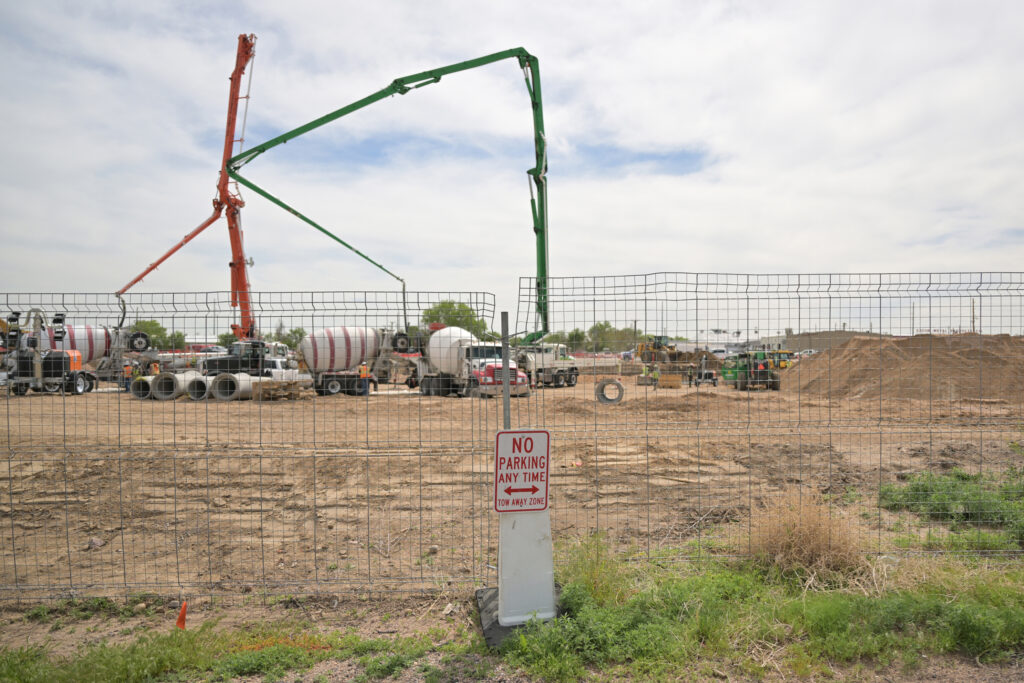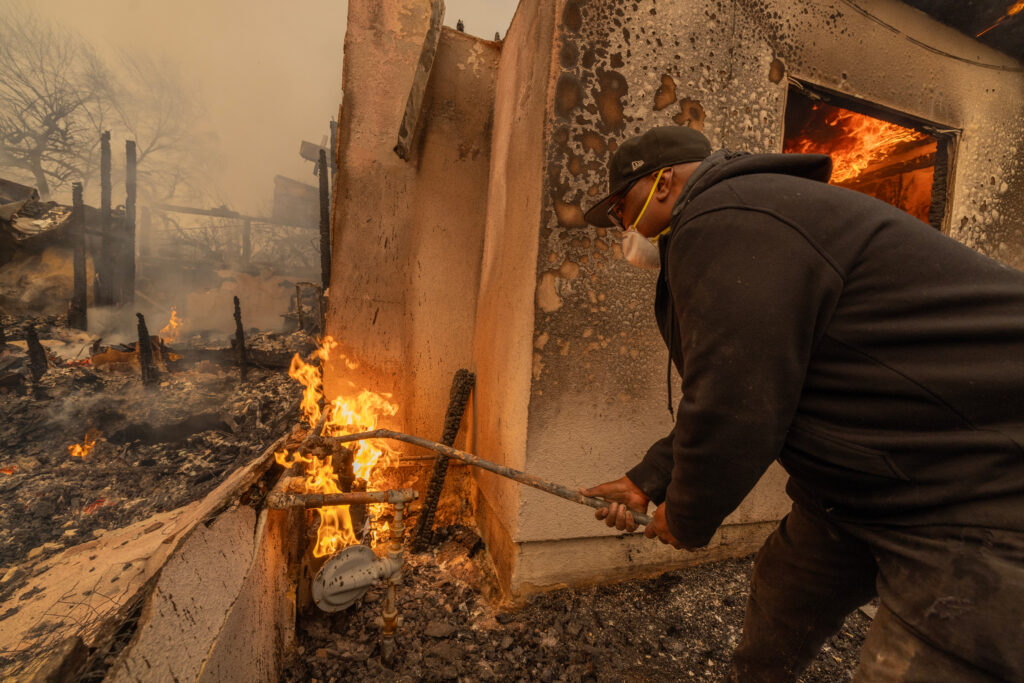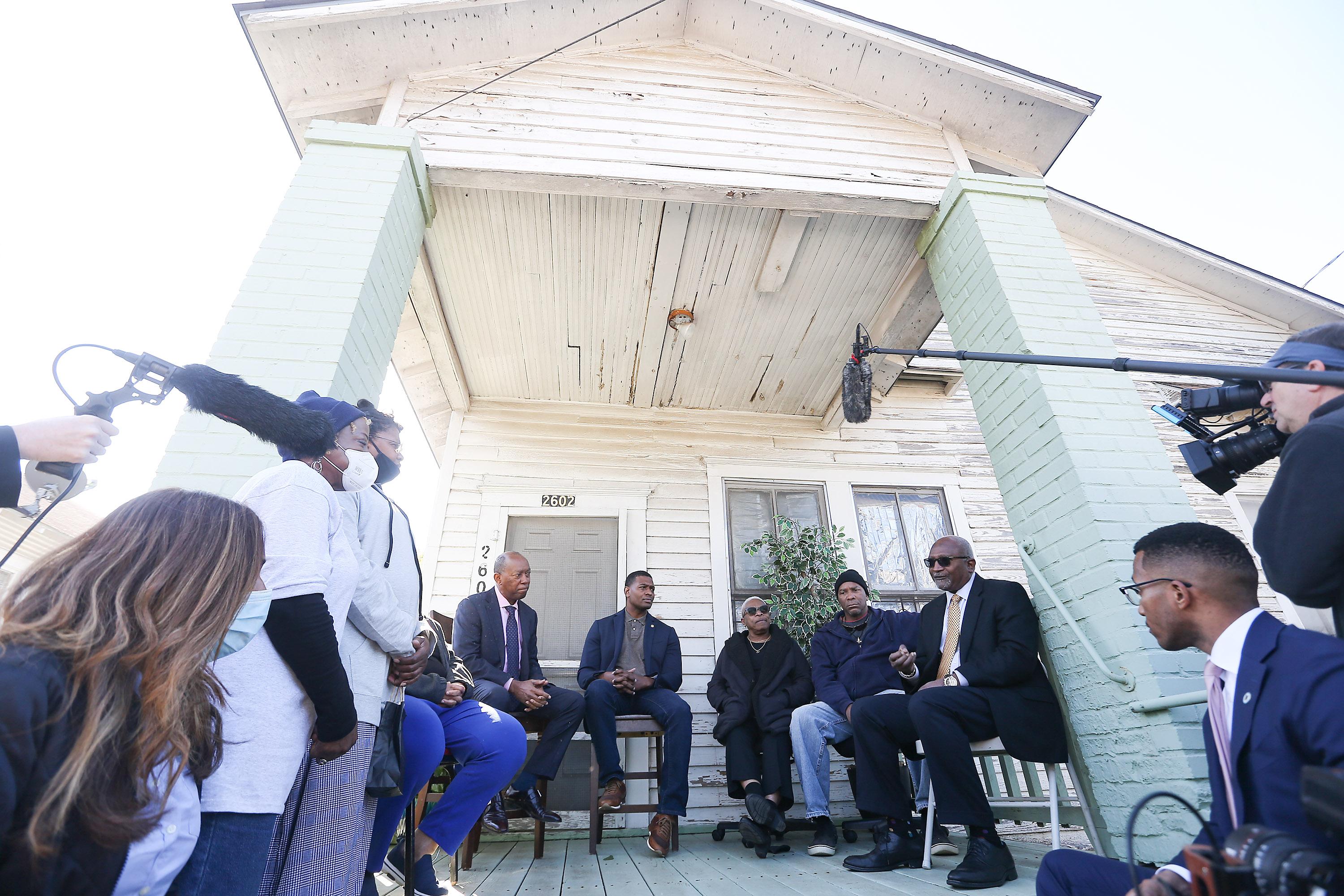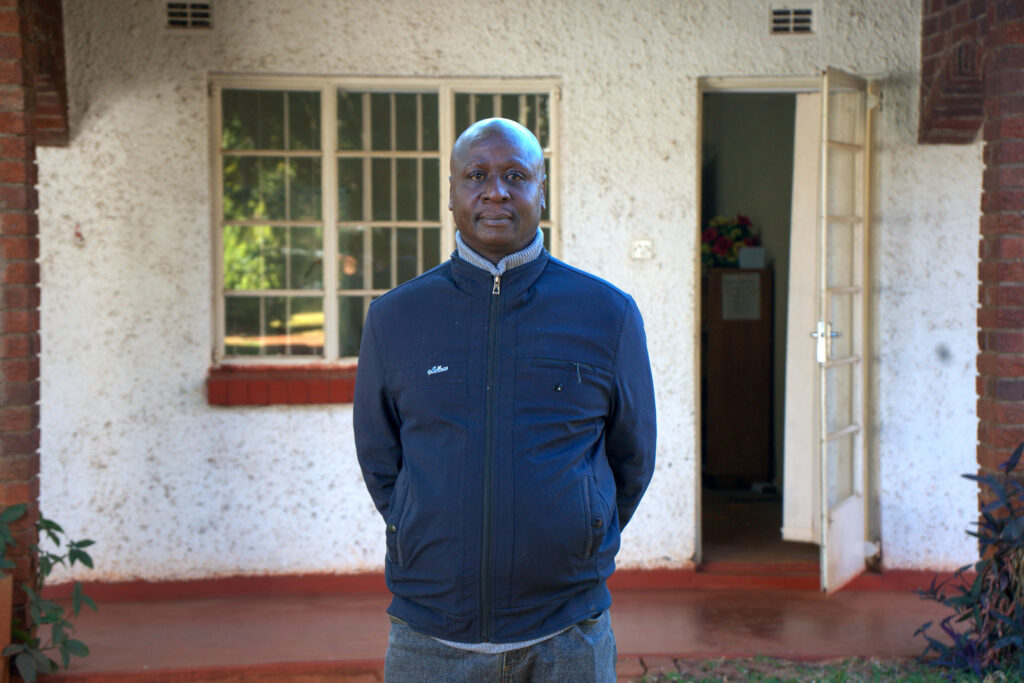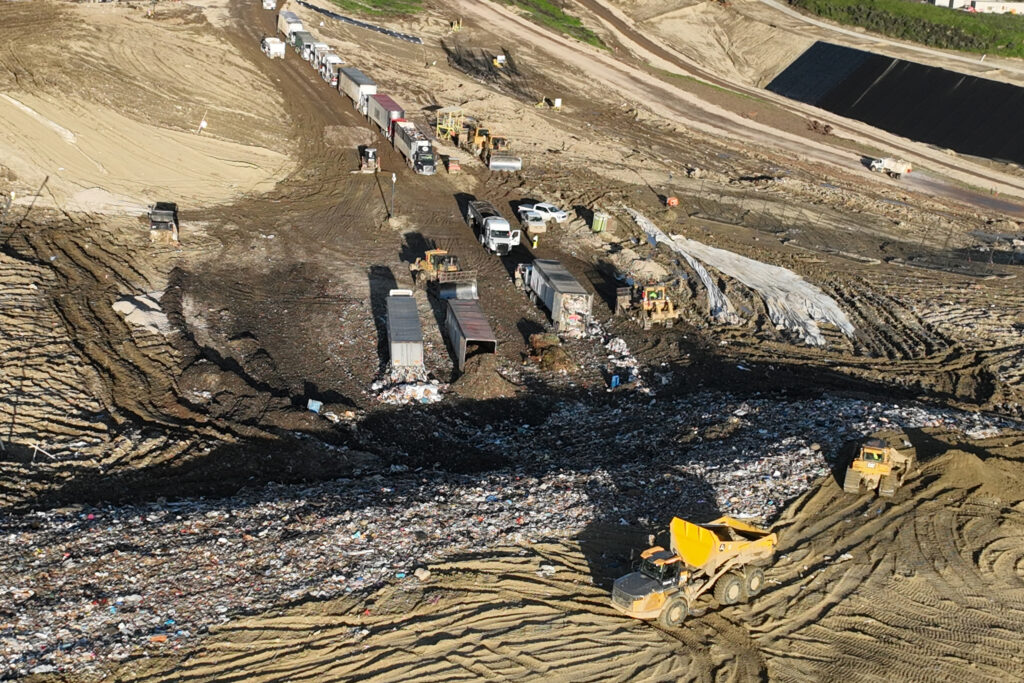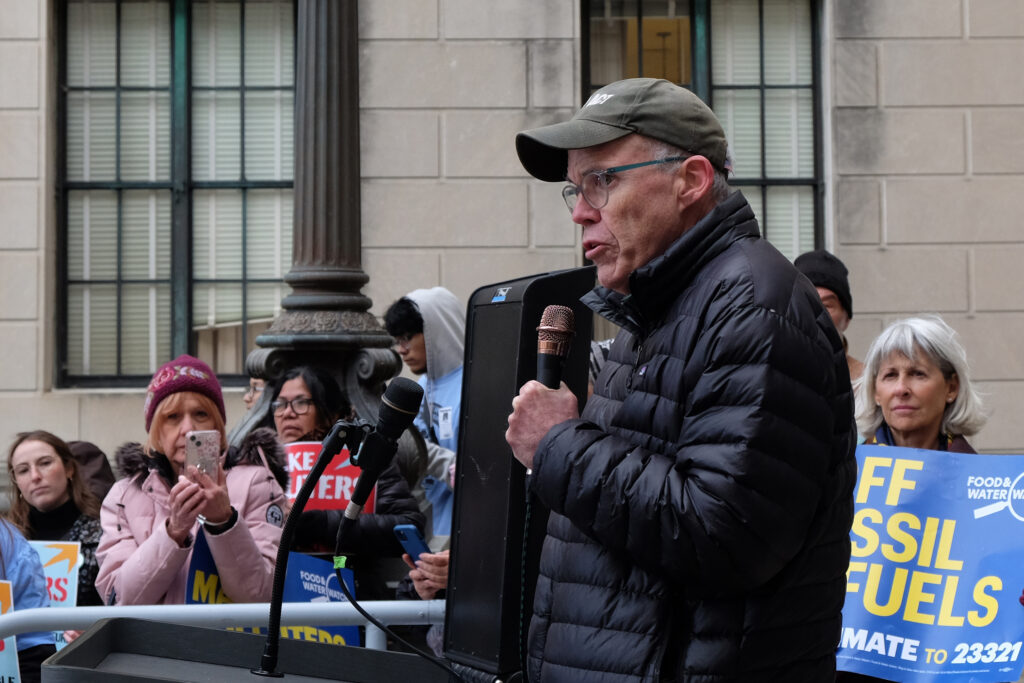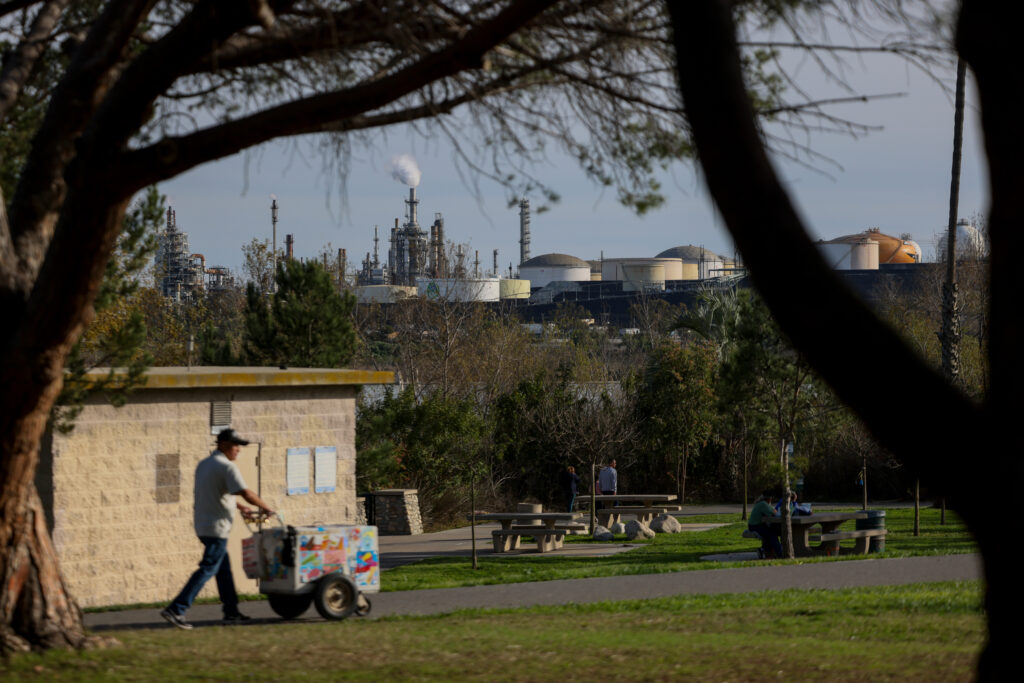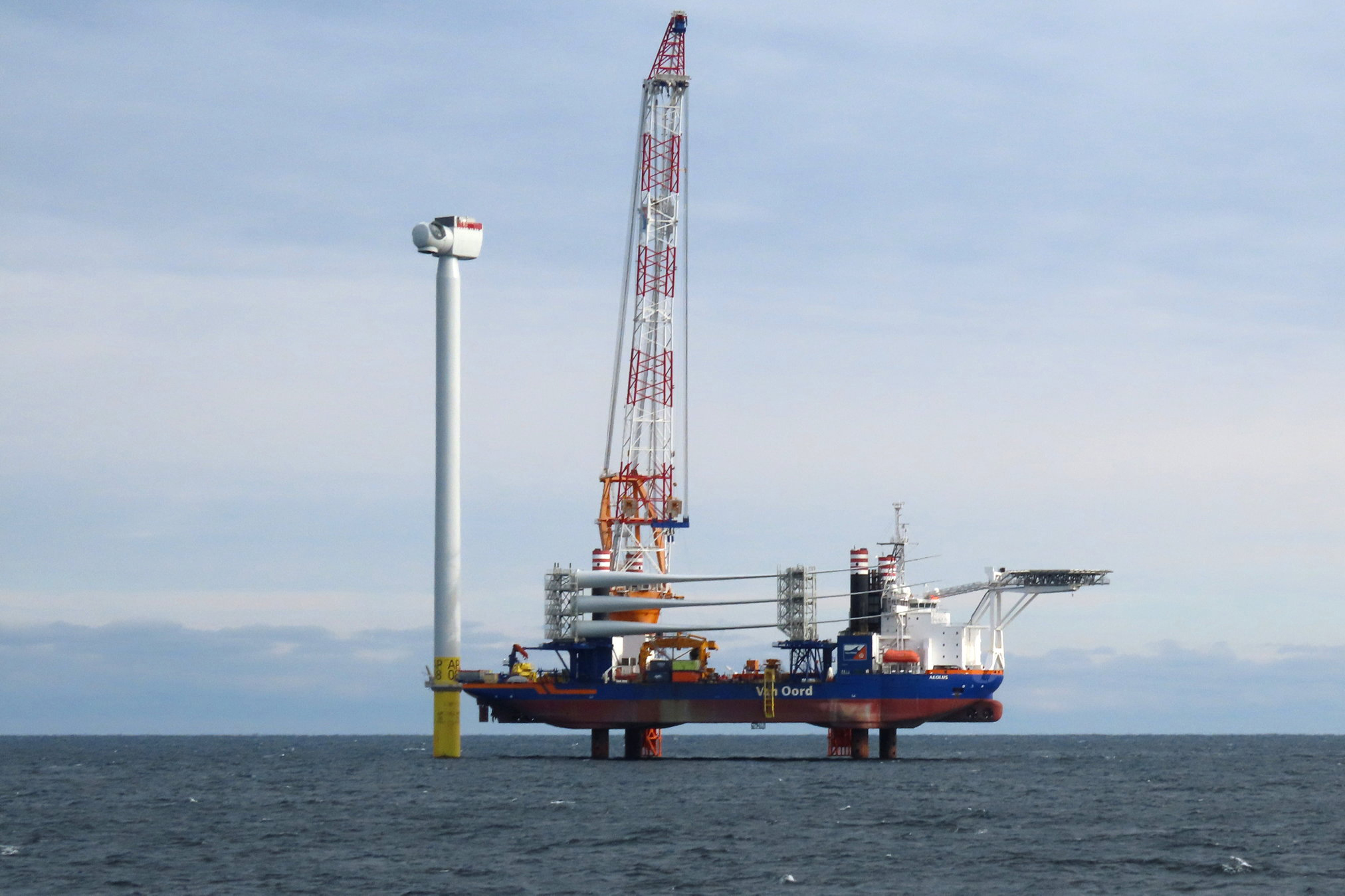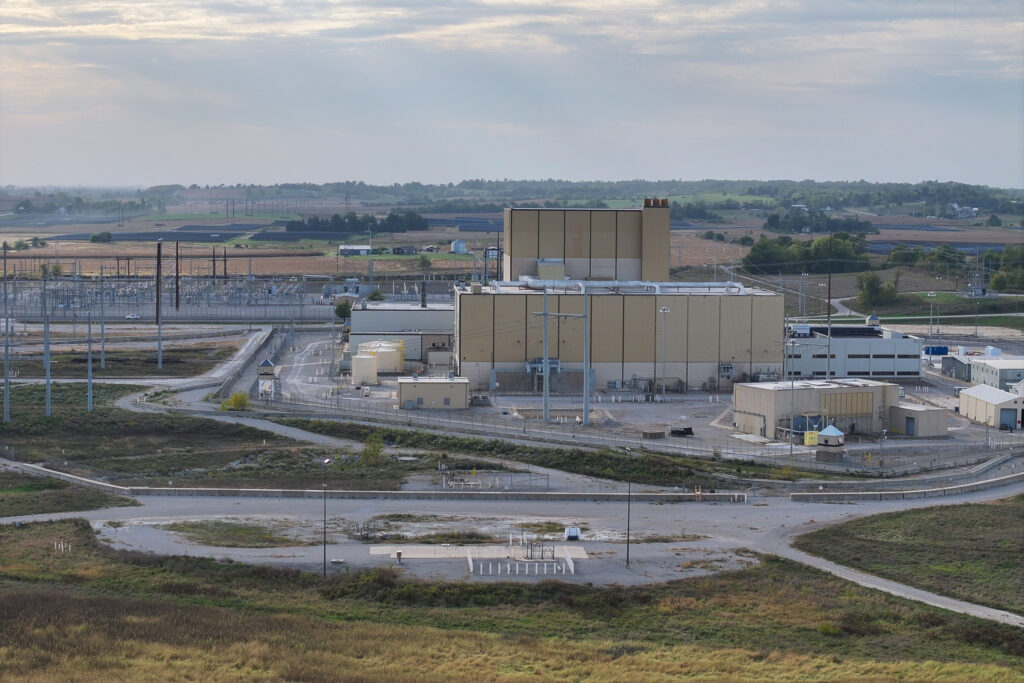CHICAGO—A community meeting had barely begun when residents leapt out of their seats in an outpouring of frustration and distrust.
“We are tired of false promises,” Isabela Jaimes, an organizer with the Southeast Environmental Task Force, told officials who’d come to discuss a new development planned for a long-vacant former steel mill site on Chicago’s South Side. “We are tired of no written agreements, and we do not want to be poisoned and we do not want to be displaced.”
Jaimes’ comments last week were met with applause and chants of “don’t poison us, don’t displace us” from many of the more than 100 Chicagoans gathered in a high school auditorium for the meeting.
The Illinois Quantum and Microelectronics Park, a public-private sector collaboration, plans to turn the former U.S. Steel site on the banks of Lake Michigan into a hub for research and development in quantum computing—a budding technology that uses quantum physics to solve complex computing problems.
We’re hiring!
Please take a look at the new openings in our newsroom.
See jobs
IQMP—led by Palo Alto-based company PsiQuantum and regional real estate developer Related Midwest, alongside the state and city governments—plans to start construction in the spring and hopes to one day house the first commercially useful quantum computer in the world. In addition to PsiQuantum, the 440-acre site will house a separate quantum system from IBM, research and development from the University of Illinois, a quantum testing program for the U.S. Department of Defense, a hospital and a host of other tenants that are yet to be secured.
The multi-billion-dollar project—which has $500 million in state funding and up to $140 million from the Defense Department—has been heralded by city and state officials, as well as the companies involved, as a boon for innovation, development and jobs in a part of the South Side that is majority low-income and people of color. But many residents are pushing back, worried about potential displacement and pollution in a community saddled with decades of disinvestment and environmental injustice.
“When you are in a Black and brown community, coming in with whatever you want, in the way in which you want, and you have these little mock meetings to appease us … my question is, who’s being held accountable?” South Chicago resident Felena Bunn asked at the meeting.
Residents have also criticized the project’s speed: It was announced last July, received plan and zoning approvals from the City Council by the end of last year, and is slated for groundbreaking as early as April, as developers finalize the land purchase from U.S. Steel.
Local organizers going door to door have found that many nearby residents haven’t heard of the plan at all, and advocates say the rushed timeline has made it difficult for neighbors to get their voices heard and heeded. Some also question whether the historically contaminated site has been cleaned up enough to develop without spreading toxic substances into the surrounding community.
Several local groups are calling for greater transparency from the city and private developers and a Community Benefits Agreement—a legally binding contract between the developer and a community—for the site. Others oppose the project altogether, arguing that the site should fulfill more immediate local needs like grocery stores, green space or affordable housing.

Priorities outlined by those calling for a CBA include environmental remediation, commitments to hire Southeast Side residents for jobs related to the project, investments in transportation infrastructure and local schools and safeguards against displacement via rising property taxes, rents and utility bills.
IQMP representatives have said they are committed to community engagement and environmental remediation, but they have not agreed to negotiations on a CBA.
“Since the Illinois Quantum & Microelectronics Park was announced last summer, the team and its partners have led a community engagement process to ensure South Chicago residents are heard and their questions addressed through dozens of meetings attended by hundreds of participants in coordination with local business, advocacy and community-based organizations,” wrote an IQMP spokesperson in an emailed statement.
“We definitely want the project to benefit the community, there’s no doubt about that,” IQMP CEO Harley Johnson, who is also a professor of mechanical science and engineering at the University of Illinois Urbana-Champaign (UIUC), told Inside Climate News.
“I’m not aware of any plan for a CBA,” Johnson added.
Alderman Peter Chico, who represents the 10th Ward, which includes part of the site, supports the project and said a CBA is “something that we’re talking through.”
“The lifeline of this whole project development is years and years,” he said, “so there’s still certain things that we’re working through with the community.”


Amalia NietoGomez, executive director of Alliance of the Southeast, which has pushed for a CBA at the site for 12 years, sees a disconnect there.
“It’s a big deal that the governor’s office and the city have made sure that the priorities of the developer are being met but they have not made sure that the priorities for the community are being met,” she said.
In the Shadow of the Steel Mill
The U.S. Steel South Works site sits close to the Indiana border, on the shore of Lake Michigan and the mouth of the Calumet River. It’s spread across Chicago’s 7th and 10th Wards on the Southeast Side.
The U.S. Environmental Protection Agency has previously called Southeast Chicago “environmentally overburdened,” with 250 regulated facilities in the area. The median household income in the area is around $45,000, far below the citywide median of $75,000, and residents are predominantly Black and Hispanic.
The South Works site began steel mill operations in the late 19th century and employed about 20,000 workers in its heyday. But the site has lain vacant since U.S. Steel closed it in 1992, the Southeast side has struggled to return to economic prosperity.
Kori Robinson was born one year after the steel mill closed. Its legacy has loomed large throughout her life.
“From basically the time that I was born to now, that’s always been like, ‘this is contaminated land,’” said Robinson, a mother of two and a volunteer member of Southside Together, a community group that opposes the quantum campus.
“That’s why we don’t get any developments on said land,” she said. “Because of contamination.”


Several companies have tried and failed to develop the site, and community activists have been pushing for a CBA there for more than a decade.
Most recently, in 2018, two European companies promised a residential development with up to 20,000 housing units. At the eleventh hour, the companies backed out, with one citing soil contamination as the reason.
Steel mill operations can leave behind a range of toxic substances, including lead, cadmium, mercury and cyanide, all of which were found—among others—at the South Works site at the time of its closure, according to a 1993 environmental report prepared for U.S. Steel. IEPA documents in subsequent years detail ongoing testing, contamination and remediation.
The IEPA remediated the South Works site after its closure and issued a No Further Remediation letter in 1997 that marked sections of the site cleared for development, while earmarking other areas for future attention. In subsequent years, the agency has issued further NFR letters for several additional sections.
Developer Related Midwest has said it plans to enroll the entire property in a voluntary site remediation program for further cleanup, beginning with the 128-acre parcel that is to be occupied by IQMP, and the IEPA said that the developer’s pre-enrollment environmental assessments are underway.
“The developer is coordinating site assessment with their construction timeline,” wrote IEPA public information officer Kim Biggs in an email.
A spokesperson for Related Midwest wrote in emailed statements that its goal is to “revitalize this area into a vibrant, sustainable development that enhances the neighborhood and creates long-term value.”
“In partnership with IEPA officials, we will conduct any further remediation that’s required as we proceed with subsequent phases,” the spokesperson wrote.
IQMP officials say that any environmental hazards will be dealt with.
“We’re confident in developer Related Midwest, who has experience working on large and complex projects, to immediately address and remediate anything identified during construction,” an IQMP spokesperson wrote in an email.
But many residents want to see more concrete details on what contamination Related Midwest has found thus far, along with the plans for remediation and keeping construction crews at the site safe. A CBA would require legally binding commitments, including on environmental remediation and worker safety.
“We understand that they’re committed, but we want to see it in writing,” NietoGomez said.
Some also worry that the state missed contamination in areas it cleared for construction.
The IEPA tested the soil by taking one sample every two acres, as opposed to the standard practice of taking two samples every half acre. IEPA documents say it was permissible because contamination in the area was thought to be relatively uniform. But Anne Holcomb, a local activist and co-chair of the grassroots group Environment, Transport, Health and Open Space of South Shore, and others have said that doesn’t appear to be correct.
“We know that it’s not homogenous,” Holcomb said. “We know from steelworkers, anecdotally, that there was illegal dumping done as the [plant] closed down in segments.”
In response to concerns about sampling density, the IEPA’s Biggs wrote that testing was not limited to the alternative sampling density, and that “the grid pattern sampling was supplemental to sampling that targeted suspected and known areas of concern,” including soil areas containing elevated total petroleum hydrocarbon levels and specific waste deposits, which were subsequently remediated.


Holcomb has found slag—a steelmaking byproduct that can contain hazardous metals—in her own yard, three blocks from the site. She fears that construction could dislodge contaminants from the soil and further endanger her community.
Holcomb and other members of her group have attended numerous community engagement meetings and repeatedly asked city, state and company officials for answers to questions about remediation and operation plans, including soil testing, underground tanks, the 2018 deal that fell through and water and energy use.
She’s not satisfied by the responses.
“These meetings are all just dog and pony shows,” Holcomb said. “They don’t answer our questions.”
A History of Environmental Injustice
Charity Escobedo, 20, grew up in South Chicago, and her family has been there since the 1970s. Multiple relatives have had severe health issues, including her grandmother, who died from ovarian cancer, and her mother, who had to get a lung transplant in her 40s for lung sarcoidosis, Escobedo said.
Escobedo’s boyfriend, Dominic Peralta, grew up in the Bush, a section of South Chicago just blocks away from the South Works site. Nearly all the older members of his family, some of whom worked in Chicago’s steel mills, have passed away from various cancers, Peralta said.
“As I got older, I got very curious about what is in the land,” said Escobedo, who studies environmental science at UIUC. Then she learned about the environmental health impacts of construction and polluting industries.
“That’s when I made the connection … that this has to have a direct correlation with the health state of the people that live on the South Side,” Escobedo said.
In 2019, researchers found that Chicago had the largest life expectancy gap in the nation—30 years less in Englewood, on the South Side, than in Streeterville, just nine miles north. The disparity persists and runs through the city along both neighborhood and race-based lines, with white residents’ life expectancy at 80 years and Black residents’ at just 69. In South Chicago, where the site sits, life expectancy is also around 69, nearly eight years less than the city average.
“We have legitimate concerns.”
— South Side resident Lucio Bitoy
Many factors affect life expectancy, some of which are related to social inequities like disinvestment, unequal exposure to pollution, insufficient access to healthcare and the physical toll of experiencing a lifetime of racism and classism, now compounded by climate change. Pollution can contribute to cancer, asthma, cardiovascular disease, diabetes and other chronic diseases.
Health inequities from environmental exposure have been the subject of local advocacy for decades on the South Side, but these disparities persist, amplifying concerns about unintended consequences from the quantum plans.
“We have legitimate concerns,” resident Lucio Bitoy said at the meeting. “You’re looking at people that have lived their whole lives around here. … We only understand that that site has been underfunded and underutilized.”
Who Will Benefit From Development?
Supporters of quantum computing hope that it will lead to advances in fields like medicine, climate modeling, energy planning and financial management, while critics of the technology raise concerns about its capacity to crack encryption and make all kinds of sensitive data exceedingly vulnerable. Others warn that the increased energy use will worsen climate change if it’s not carbon free.
PsiQuantum is building a quantum computer facility in Brisbane, Australia, in addition to its planned facility in Chicago, and has said that it believes it will have a useful machine by 2029.
“This is really about exploring ways to build larger quantum computers that will be needed to get us to the scale where they can demonstrate real advantage over classical computers,” Johnson said. “That, we believe, is what is needed to really start to demonstrate the potential uses of quantum computing that can have [real] impact on people’s lives.”
IQMP supporters hope the project will revitalize the area.
“My South Chicago community is a community that has been disinvested in for decades,” said Chico, the alderman. “When the dependency on steel declined, so did my neighborhoods in the 10th Ward. So I think this is an opportunity of hope that not only are we putting something on the site finally, but something that could really benefit humanity.”
Related Midwest projects 20,000 jobs in the next six years, but it’s unclear how many of these jobs will be permanant—as opposed to temporary construction roles—or accessible to those already living on the Southeast side. Between a fifth and a quarter of residents over 25 in South Chicago and South Shore have bachelor’s degrees, and some residents fear that jobs in research and quantum physics will bring displacement rather than employment opportunities.
“I think this is an opportunity of hope that not only are we putting something on the site finally, but something that could really benefit humanity.”
— Alderman Peter Chico, who represents the 10th Ward
Johnson and others involved with the project have said that jobs will include everything from temporary construction jobs to PhD-level physics and engineering positions, but that a bulk will involve coding software and algorithms—which Johnson said will vary in experience and education requirements.
“We think especially on the algorithm side, that’s where we’re going to see a lot of jobs over time in this industry, and they won’t all be at the IQMP park,” Johnson said. “Companies who want to adopt quantum computing … need to have people who know how to program these computers.”
Some weekend educational programming for high school students in South Chicago has already begun, aiming to expose kids to future careers in the quantum field. IQMP is also considering some kind of apprenticeship program for specialized tech work, Johnson said.
“That’s an active topic of conversation,” Johnson said. “We recognize that a program of that nature could be really important to make some of these opportunities more accessible to the community.”
Still, IQMP officials have acknowledged the possibility that existing residents could get priced out of the Southeast side.
“This is a concern,” Johnson said. “We’re interested in helping find solutions to this.”
This story is funded by readers like you.
Our nonprofit newsroom provides award-winning climate coverage free of charge and advertising. We rely on donations from readers like you to keep going. Please donate now to support our work.
Donate Now
Johnson referred questions about efforts to combat displacement to Related Midwest. A spokesperson from Related referred to a nonprofit-led effort to engage community members in creating a “quality-of-life” plan for South Chicago, which will help identify funding and resource needs. The planning process is led by three Chicago-based nonprofits: Claretian Associates, United Way of Metro Chicago and Local Initiatives Support Corp.
“We are looking forward to seeing the results from the research this fall,” the Related spokesperson wrote in an email.
At last week’s community meeting, Thomas Anderson, director of economic development at the mayor’s office, said the Cook County Assessor’s Office will set up a meeting for Southeast Side residents to discuss concerns about displacement and property taxes. Anderson also pointed to three new city-supported housing projects in the area, which include about 180 units of affordable housing, he said.
“That’s chump change to the amount of need in this area,” yelled Jaimes, of the Southeast Environmental Task Force.




“One hundred eighty units isn’t going to solve all the issues around housing, it’s not going to address potential displacement,” Anderson said later in the meeting. “But it is a big start, right? It has to start somewhere.”
Residents are also worried that the site could increase energy costs, a growing issue nationwide as data centers stoke power demand. The PsiQuantum facility on IQMP has been projected to have a energy profile similar to that of a small data center. The percentage of income spent on energy bills is already disproportionately high for low-income and Black households in Chicago.
“Folks are concerned about being displaced because of rising housing prices, rising rents, rising taxes but also rising rates for utilities,” NietoGomez said.
IQMP has begun receiving state funds to support new power infrastructure for the facility, a spokesperson said.
“My expectation is that that can create a model with ComEd that does not affect ratepayers directly, but how they exactly plan to do that is really a question for ComEd,” Johnson said, referring to the Chicago-based utility.
PsiQuantum has said that its facility will use 100 percent carbon-free electricity, although it did not specify how. The existing power grid is not yet free of fossil fuels.
John Schoen, senior manager of communications at ComEd, said the company doesn’t have information about the potential impact on ratepayers or the 100 percent carbon-free plan, and suggested speaking with PsiQuantum and Related Midwest. Related also referred the question to Psi Quantum, and PsiQuantum did not respond to a request for comment.
“My Concern Is Trust”
On a Saturday in March, members of Southside Together knocked on doors just blocks away from the site to raise awareness about IQMP and invite neighbors to get involved in their organizing. Most of the residents who answered their doors had heard very little or nothing at all about the quantum campus.
At a teach-in the following week, members and newcomers shared what they would like to see at the vacant site. Suggestions included affordable housing, park space, co-op grocery stores, urban gardening, vocational programs and flood-proofing for the lakefront.




Since IQMP was announced in July 2024, the city has hosted several meetings for community engagement. But these efforts rely on residents hearing about the events and electing to go. Mailers have been sent to homes in the area, but several residents at last week’s meeting said they’ve never received anything about the facility despite living just blocks away.
Construction is imminent—Johnson said it could begin anywhere between a few weeks to a few months from mid-March. With many residents of the Southeast Side still unaware that it’s coming, some organizers say their community wasn’t sufficiently involved in the process.
Ultimately, they say, residents want a seat at the table and self-determination in how to use the land that has been vacant for so many years.
“My concern is trust,” said Bunn, one of dozens of neighbors who stood up and spoke to the crowd at last Wednesday’s meeting.
Her comments were met with applause and roars of agreement.
“I’ve been a community organizer for 30 years and I haven’t seen a Community Benefits Agreement,” Bunn continued. “I haven’t seen people hold up their end of the bargain. … How do we trust you?”
About This Story
Perhaps you noticed: This story, like all the news we publish, is free to read. That’s because Inside Climate News is a 501c3 nonprofit organization. We do not charge a subscription fee, lock our news behind a paywall, or clutter our website with ads. We make our news on climate and the environment freely available to you and anyone who wants it.
That’s not all. We also share our news for free with scores of other media organizations around the country. Many of them can’t afford to do environmental journalism of their own. We’ve built bureaus from coast to coast to report local stories, collaborate with local newsrooms and co-publish articles so that this vital work is shared as widely as possible.
Two of us launched ICN in 2007. Six years later we earned a Pulitzer Prize for National Reporting, and now we run the oldest and largest dedicated climate newsroom in the nation. We tell the story in all its complexity. We hold polluters accountable. We expose environmental injustice. We debunk misinformation. We scrutinize solutions and inspire action.
Donations from readers like you fund every aspect of what we do. If you don’t already, will you support our ongoing work, our reporting on the biggest crisis facing our planet, and help us reach even more readers in more places?
Please take a moment to make a tax-deductible donation. Every one of them makes a difference.
Thank you,





